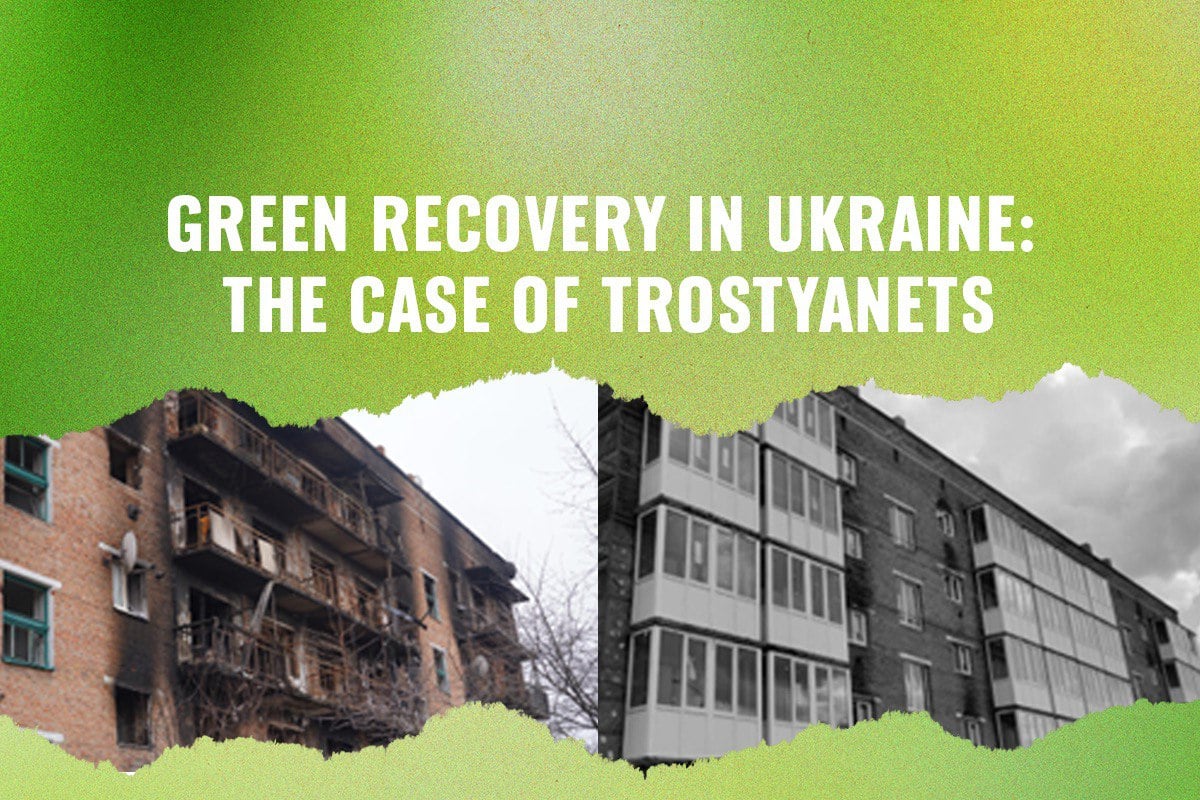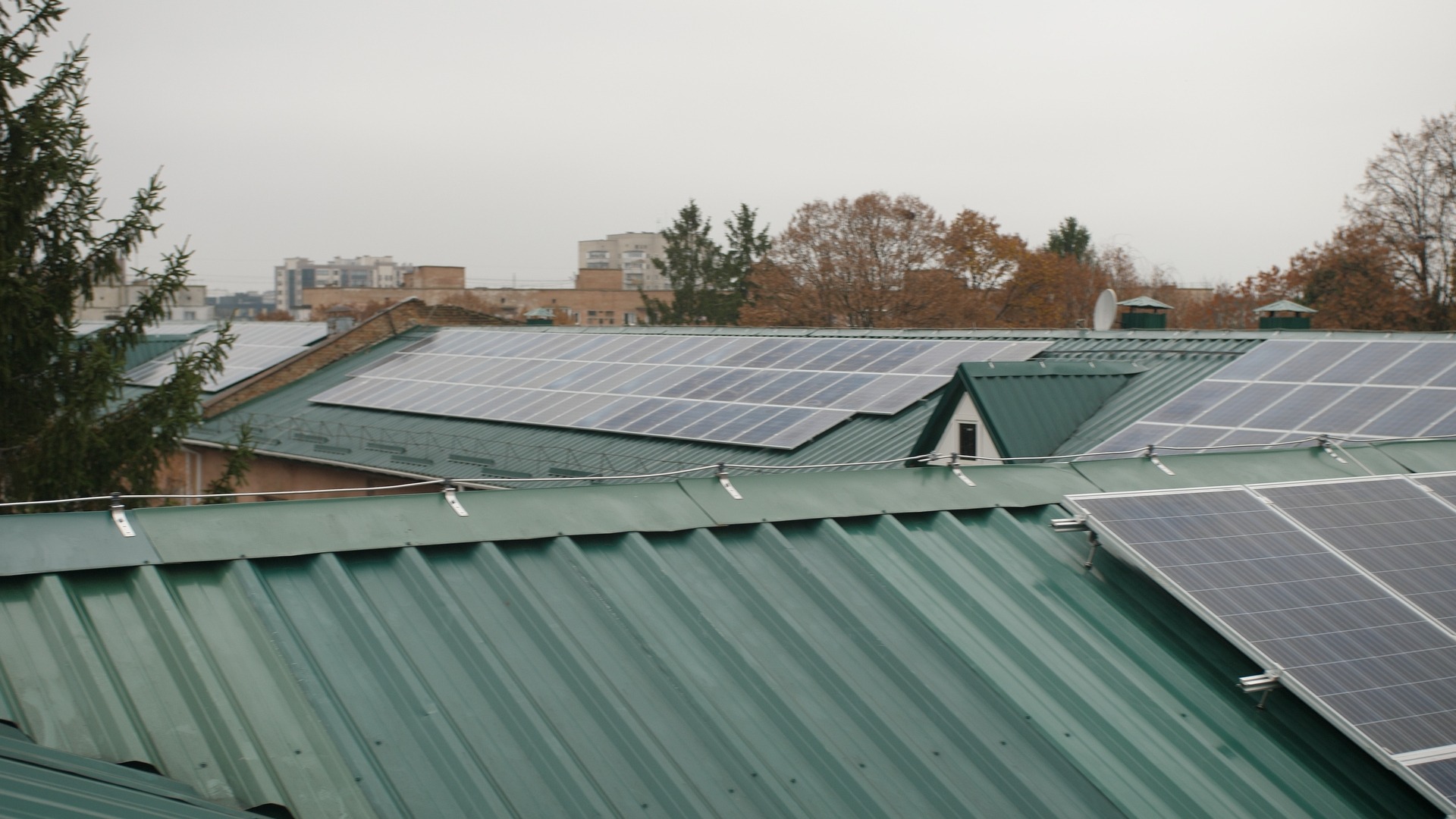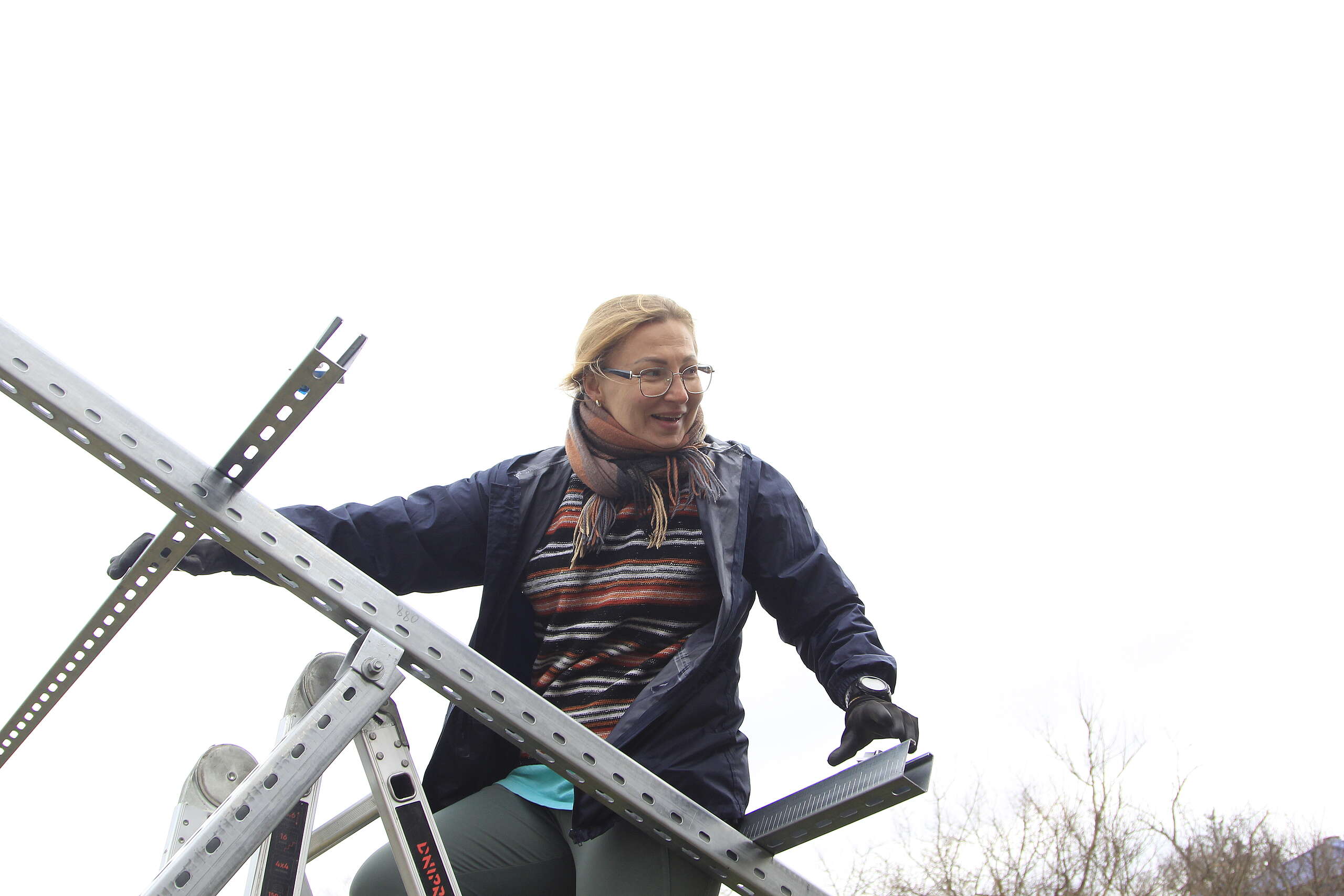24 February 2025
The Greenpeace Ukraine team writes this blog on the third anniversary of Russia’s full-scale invasion of Ukraine with a terrible sense of déjà vu.
Three years ago we woke up to explosions, the noise of aircraft and alarmed calls from relatives. Russia started a full-scale invasion of Ukraine. The news came like waves, making it difficult for us to follow the updates in a meaningful way. But each of us remembers how we were especially shocked by the news about the occupation of the Chornobyl nuclear power plant by the Russian armed forces.
For Ukrainians, the Chornobyl nuclear power plant is not just about terrible memories of the greatest nuclear tragedy in the world. The Chornobyl nuclear power plant remains today a symbol of society’s vulnerability to lies and irresponsible decisions by the authorities. Then, in February 2022, we saw how the “peaceful atom” can be used to blackmail the whole world. In a few days, the nuclear dictatorship gained momentum – the Russian occupiers seized the Zaporizhzhia nuclear power plant hostage and which continues today. Thanks to the resistance of the Ukrainian people and the efforts of the Ukrainian army, in the spring of 2022, the Chornobyl nuclear power plant was liberated from Russian occupation. The people of Mykolaiv also prevented the Russian attack and occupation of the South Ukraine nuclear plants.
Now, three years later, Russia again attacked Chornobyl. On February 14, 2025, the Russian military launched a drone with a high-explosive warhead at an altitude of 85 meters, which damaged the New Confinement Shelter (NSC), that protects the tragically famous 4th reactor of the Chornobyl nuclear power plant. The Russian drone exploded on impact and penetrated the outer roof of the NSC and the inner containment shell, causing a fire that Ukrainian rescuers fought during this past week. The drone’s flight altitude was deliberately chosen so that it would not be visible to radar. And this is no accident. Why is a new attack on Chornobyl symbolic of the time we are at in modern history? Russia is trying to assert control over the future war negotiations and to secure permanent control over the Zaporizhzhia nuclear plant – showing it is prepared to attack nuclear plants, even Chornobyl, and that it has complete disregard for nuclear safety – the aim is to frighten the world into conceding all to Moscow. As a result, we are witnessing complete freedom of action for criminal arbitrariness.
We are convinced that there are so much more the international community can do to put pressure on Russia to end this bloody war in the heart of Europe. Sanctions are riddled with gaps and loopholes, allowing Russia to continue profiting and financing its war machine. A highly lucrative trade persists between European and Russian nuclear companies, which willingly collaborate with those complicit in war crimes. Meanwhile, Russian fossil fuels—oil and gas—are still being exported with the involvement of European companies. The ongoing cooperation with Russian businesses, despite Rosatom and the Russian armed forces committing atrocities against the people and environment of Ukraine, must end.
Events are unfolding rapidly not only in Ukraine but across the world. Stopping Russian aggression and preventing new security threats requires decisive, comprehensive action. Today, February 24, 2025, the Greenpeace Ukraine team presents four urgent demands to world leaders — issues our organization has championed for years but which can no longer be delayed. These critical steps are essential to deterring Russian aggression. Our focus is on the acceleration of renewables, security from nuclear danger in Ukraine and globally, and cutting off the revenue streams that fuel Russia’s war, devastating Ukraine’s environment while enabling conflict, suffering, and loss of life.
1. We call on the international community to invest in renewable energy in Ukraine. Greenpeace Ukraine also urges the Ukrainian government to prioritize decentralized solar energy development. Solar power has already proven to be a reliable source of electricity during outages, even in winter, and must play a key role in building a resilient and sustainable energy future in Ukraine’s reconstruction.
2. We demand the inclusion of the entire Russian shadow fleet in the next EU sanctions package. The Shadow Fleet is Profitable from oil exports, which finances the war, and carries high risks of oil spills in the seas of Europe. We also demand EU sanctions on Russian liquefied natural gas (LNG), which also finances the war and contributes to climate change.
3. We demand that Russia must be prevented from restart of the the Zaporizhzhia nuclear plant; and that there is no support for restart provided by the International Atomic Energy Agency (IAEA), while all international efforts are made to secure the earliest Russian de-occupation of ZNPP, including during negotiations to end the war, and for full control of the nuclear plant restored to Ukraine.
4. We demand the imposition of comprehensive sanctions on the Russian nuclear corporation Rosatom and the immediate termination of all relations with this criminal organization, which is responsible for the occupation of both the Chornobyl and Zaporizhzhia Nuclear Power Plants.
The target for new solar installations in the Plan of Ukraine (2024) is too low (+0.7 GW in total by 2027). In our opinion, the Ukrainian government needs to prioritize decentralized solar energy development, and set far more ambitious goals for the development of solar energy.
The Greenpeace Ukraine team firmly believes that large-scale decentralized solar energy development is the best response to the energy crisis and the key to Ukraine’s resilience and independence. Due to relentless Russian strikes, over 85% of thermal power plant capacity and 50% of hydroelectric capacity have been lost, while nearly 45% of nuclear capacity remains unusable under Russian occupation at the Zaporizhzhia NPP. With the energy system under constant attack and on the verge of collapse—mirrored by the heating sector’s struggles—deploying small decentralized hybrid solar power plants alongside existing municipal solar installations is crucial for strengthening Ukraine’s resilience and keeping the lights on in these difficult times.
Investing in new nuclear plants is a dangerous distraction. It is costly, slow to deliver, and undermines the growth of renewables while creating new targets for potential future Russian aggression. Nuclear power does not provide energy security—it only brings expensive electricity and increased risks.
We appeal to all leaders to properly understand Russia’s nuclear threats, mobilize forces and stand together for a clean and secure future of Ukraine and Europe where democracy and freedom prevails.
As we mark the third anniversary of this devastating war, the demands of the Greenpeace Ukraine team represent only the beginning of what must be done to secure a just and lasting peace for Ukraine.
The road ahead is long, but the need for action is immediate and clear. Together, we can rise to the challenge and can help bring an end to this devastating war, and forge a path towards a just peace and green reconstruction in Ukraine.



